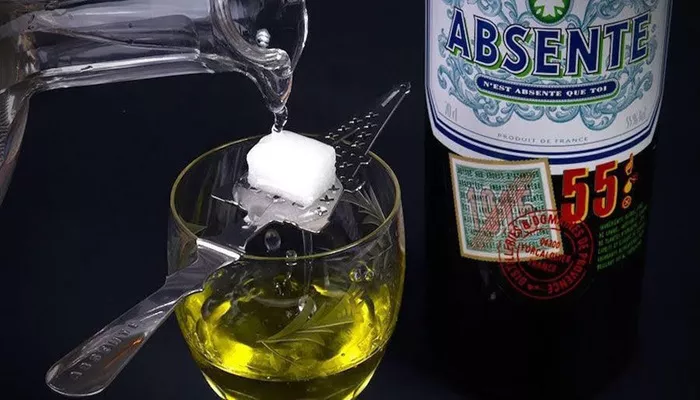Absinthe is a unique and often misunderstood spirit with a long and storied history. In this extensive essay, we will explore the process of making absinthe liquor, from start to finish.
Introduction
Absinthe is a highly alcoholic beverage that is known for its distinct green color and complex flavor profile. It has been the subject of much controversy and fascination over the years, and its production process is both art and science.
History of Absinthe
1. Origins
Absinthe is believed to have originated in Switzerland in the late 18th century.
It was initially created as a medicinal tonic, but soon became popular as a recreational drink.
2. Popularity in the 19th and early 20th centuries
Absinthe became extremely popular in Europe, particularly in France, during the 19th and early 20th centuries.
It was favored by artists, writers, and intellectuals, who were drawn to its reputed mind-expanding properties.
3. Controversy and bans
As absinthe’s popularity grew, so did concerns about its potential negative effects.
It was blamed for a variety of social ills, including addiction, insanity, and violence.
As a result, absinthe was banned in many countries in the early 20th century.
4. Resurgence in recent years
In recent years, absinthe has experienced a resurgence in popularity.
Many countries have lifted their bans on absinthe, and it is now available in a variety of forms.
Ingredients for Making Absinthe
1. Herbs and Botanicals
The main ingredients in absinthe are herbs and botanicals, including wormwood, anise, fennel, and other flavorings.
Wormwood is the key ingredient that gives absinthe its characteristic bitter flavor.
2. Alcohol
High-proof alcohol is used as the base for absinthe.
The alcohol is typically distilled from grains or fruits.
3. Water
Clean, pure water is essential for making absinthe.
The water is used to dilute the alcohol and extract the flavors from the herbs.
Equipment Needed for Making Absinthe
1. Distillation Apparatus
A still is required for distilling the alcohol and extracting the flavors from the herbs.
There are several types of stills available, including pot stills and column stills.
2. Maceration Vessels
Maceration vessels are used to soak the herbs in alcohol to extract their flavors.
Glass jars or stainless steel containers are commonly used for maceration.
3. Filters and Straining Equipment
Filters and strainers are used to remove any solids or impurities from the absinthe.
Cheesecloth, coffee filters, and activated carbon filters are commonly used for filtering.
4. Measuring Tools
Measuring cups, spoons, and hydrometers are needed to measure the ingredients and monitor the alcohol content.
See Also: Why Is Sirits Alcohol? A Comprehensive Guide
The Absinthe Making Process
1. Preparation of Herbs
The herbs are carefully selected and measured.
Some herbs may need to be dried or crushed to release their flavors.
2. Maceration
The herbs are placed in a maceration vessel and covered with high-proof alcohol.
The mixture is left to soak for several days or weeks, depending on the recipe.
3. Distillation
After maceration, the mixture is distilled in a still.
The distillation process separates the alcohol from the herbs and extracts the flavors.
The distillate is collected and measured for alcohol content.
4. Dilution and Coloring
The distilled absinthe is diluted with water to reduce the alcohol content to the desired level.
Some absinthes are colored green using natural herbs or artificial coloring agents.
5. Aging and Bottling
The absinthe may be aged in oak barrels or glass containers to mellow the flavors.
Once aged, the absinthe is filtered and bottled for sale.
Variations in Absinthe Recipes
1. Different Herb Combinations
There are many different recipes for absinthe, each with its own unique combination of herbs.
Some recipes may include additional flavorings such as citrus peel, lavender, or mint.
2. Methods of Distillation
Different distillation methods can produce different flavors and qualities of absinthe.
Some distillers use traditional pot stills, while others use modern column stills.
3. Aging and Finishing
The aging process can also affect the flavor of absinthe.
Some absinthes are aged for months or years, while others are bottled immediately after distillation.
Safety Considerations in Making Absinthe
1. Alcohol Safety
Working with high-proof alcohol can be dangerous.
Proper safety precautions should be taken, such as wearing gloves and eye protection.
2. Herb Safety
Some herbs used in absinthe can be toxic if consumed in large quantities.
It is important to use only approved herbs and follow proper dosages.
3. Equipment Safety
Distillation equipment can be dangerous if not used properly.
Follow all safety instructions and guidelines when operating a still.
Conclusion
Making absinthe liquor is a complex and time-consuming process that requires careful attention to detail and safety. By following the proper steps and using high-quality ingredients and equipment, you can create a unique and delicious spirit that is sure to impress. However, it is important to remember that absinthe is a highly alcoholic beverage and should be consumed in moderation.
This essay has provided a detailed overview of the process of making absinthe liquor. From the history of absinthe to the ingredients, equipment, and steps involved in the production process, we hope you have gained a better understanding of this fascinating spirit. Whether you are a professional distiller or a home enthusiast, making absinthe can be a rewarding and enjoyable experience.
You might be interested


